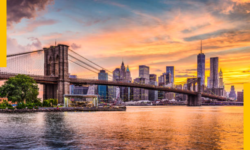Amtrak Train Speed: How Fast Does it Travel in the USA
Travelling has always been about more than just reaching a destination, especially when you’re aboard an Amtrak train. As the sun casts a warm glow on the horizon, our journey begins on a calm morning from the heart of St. Louis. Our destination? The bustling city of Chicago. But today, our focus isn’t just on the beautiful landscapes whizzing past, but the speed at which they’re doing so.
RELATED: Best Places to Travel in November 2023
Contents
Brief Overview of Amtrak
Amtrak, America’s prime passenger rail service, has been bridging cities and states since 1971. With a network sprawling across 46 states and serving over 500 destinations, it’s more than just a train service; it’s a legacy on tracks. Over the years, it has carried passengers far and wide, clocking in miles and memories. Yet, amidst the rhythmic chug of the train, a question often pops up, “how fast does an Amtrak train travel?”.
Fact Check !
Amtrak Acela Express, operating in the Northeast Corridor of the United States, is the fastest train in the Americas, reaching speeds of up to 150 miles per hour (240 kilometers per hour) and offering a swift and efficient mode of transportation for passengers traveling between major cities like Boston, New York, and Washington, D.C.
The Curiosity Surrounding Train Speeds
The notion of speed has always tickled the fancy of many a traveler. As our train from St. Louis to Chicago races against the wind, we delve into the metrics. With a fast Amtrak train like the Acela Express, you might find yourself whooshing past at speeds of up to 150 mph. Now that’s a fleeting embrace with the wind! The Amtrak average speed, however, hovers around a more leisurely pace, allowing for a gentle gaze upon the passing scenery.
But as the whispers of US high-speed rail developments flutter through the air, the palpable excitement over what’s on the horizon for Amtrak’s speed is hard to ignore. Could we soon be racing alongside our European and Asian counterparts? Or better yet, could the day when the phrase “how fast does the Amtrak go” elicits a proud number be upon us? The wind against our faces as the countryside blurs gives a tantalizing promise of what the meld of steel, steam, and speed could unveil.
As the landscape morphs and the skyline of Chicago beckons, we’re not just miles closer to our destination, but a tad more enlightened on the rhythm of steel wheels against sturdy tracks. And while the speed may vary, the essence of the journey remains unhurried, much like the steady beat of a traveler’s heart.
Journey Spotlight: Train from St. Louis to Chicago
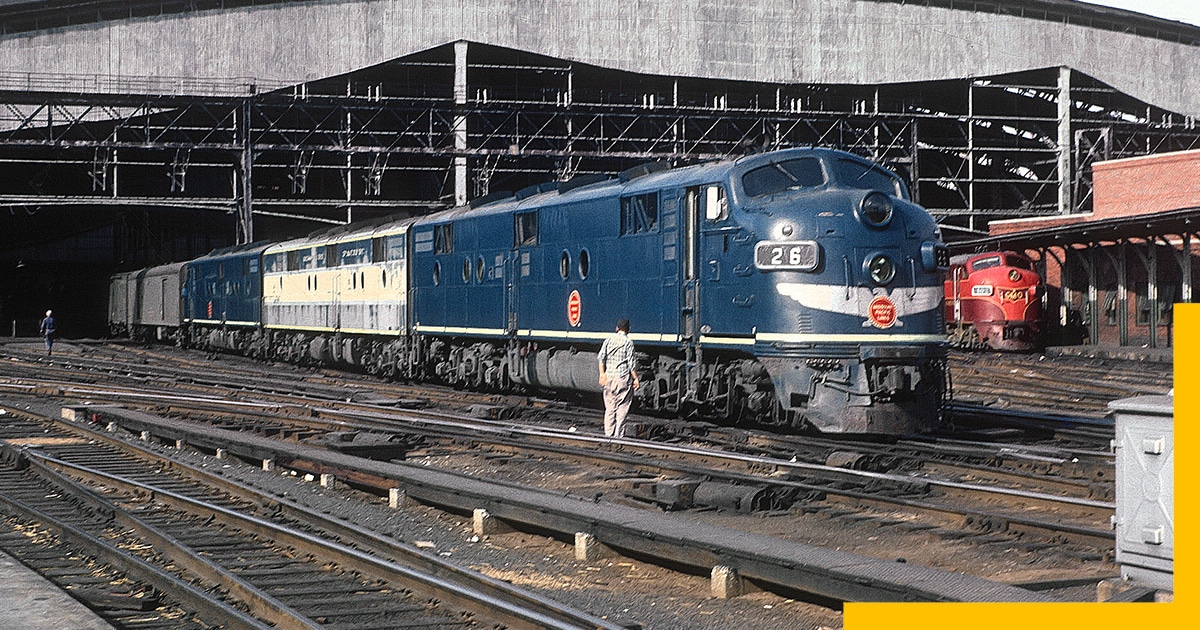
Bored of the same old road trips and sky-high flights? Hop onto an Amtrak and discover the rhythm of the rails as you traverse the heart of America. Our spotlight journey today is the train from St Louis to Chicago, a route that unfolds the scenic beauty of Illinois while promising speed, comfort, and a fair share of adventures.
Speed, Comfort, and Convenience
Who says you can’t have the best of both worlds? Or in this case, all three? The Amtrak Lincoln Service lets you devour the miles at a brisk pace, reaching top speeds of 110 mph between Alton and Joliet. Forget the tedious drive or the cramped flight; stretch out on spacious seats while your device gulps power from the outlets. A constant companion of Wi-Fi, refreshments to nibble on, and the liberty to roam around or sink into a peaceful slumber – talk about a royal journey sans the royal price!
Booking your tickets is a breeze, and with flexible schedules, it’s like this train is running on your time. And let’s not forget, no pesky security checks or traffic snarls to wrestle through. From the moment you board at St. Louis Gateway Station to the time you alight in the heart of downtown Chicago, it’s smooth sailing… or should we say, smooth railing?
The Route and What to Expect
As the train from St Louis to Chicago chugs along, the unfolding scenes are nothing short of a live-action movie. The mighty Mississippi River waves as you whisk by, the rolling hills play peek-a-boo, and the farmlands lay out a green carpet. Urban skylines soon join the party as you near Chicago, their tall structures standing as sentinels of the vibrant city.
The journey is not just a visual treat but a walk through history. The whispers of the past echo as you pass by the Lincoln Home National Historic Site in Springfield, the Abraham Lincoln Presidential Library, and the towering Willis Tower in Chicago. Each stop is a chapter from the past, beckoning the curious souls.And amidst this tapestry of experiences, the friendly Amtrak crew ensures your journey is as comfortable as it is memorable. So, next time the wanderlust bug bites, you know which tracks to hit!
How Fast Do Amtrak Trains Go?
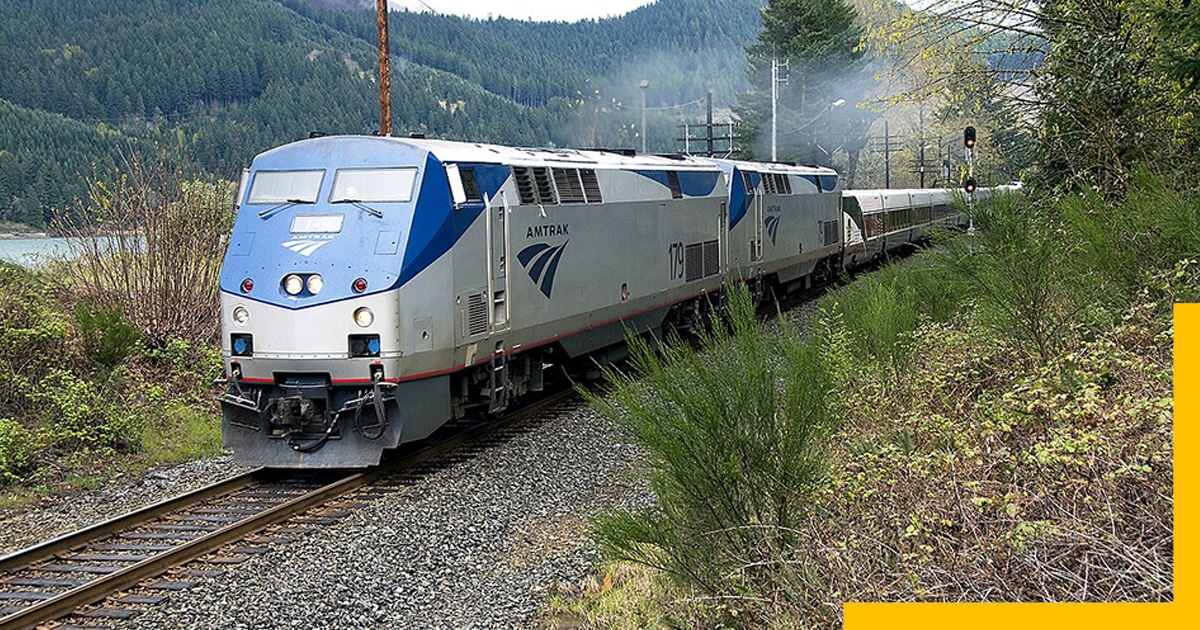
The American landscape is a palette of endless vistas and who better to traverse them than Amtrak? But as we settle into our seats, the rhythmic chug of the train beckons a question, “how fast do Amtrak trains go?”. Let’s embark on a numerical journey to decipher the pace of Amtrak, shall we?
Analyzing Amtrak Average Speed
Amtrak’s average speed varies across its network. While a train from St. Louis to Chicago might not break any land speed records, it offers a chance to soak in the Midwest’s scenic beauty. On average, Amtrak trains chug along at speeds between 30 to 60 mph, a gentle pace that allows the world outside to paint moving pictures against our window.
Fast Amtrak Train: The Acela Express
Then there’s the Acela Express, Amtrak’s claim to speed fame. As the fast Amtrak train on the block, the Acela is a whizzing spectacle reaching speeds up to 150 mph. It’s the closest Amtrak gets to the illustrious US high speed rail dreams. When Acela accelerates, you can almost hear the wind gasp!
How Fast Does Acela Go?
Aboard the Acela, every journey morphs into a swift ballet. With a top speed of 150 mph, Acela slashes through the East Coast, making a statement that yes, trains in the US can indeed flirt with speed. While the US is yet to hop aboard the global high-speed rail bandwagon fully, Acela gives a glint of what’s possible.
As our journey across the Amtrak average speed landscape concludes, we’re left with a blend of anticipation and appreciation. The pace may be leisurely on most routes, but with the Acela Express, Amtrak surely gives a glimpse of a swift, steel future awaiting the American rails.
Comparing U.S. Rail Speeds
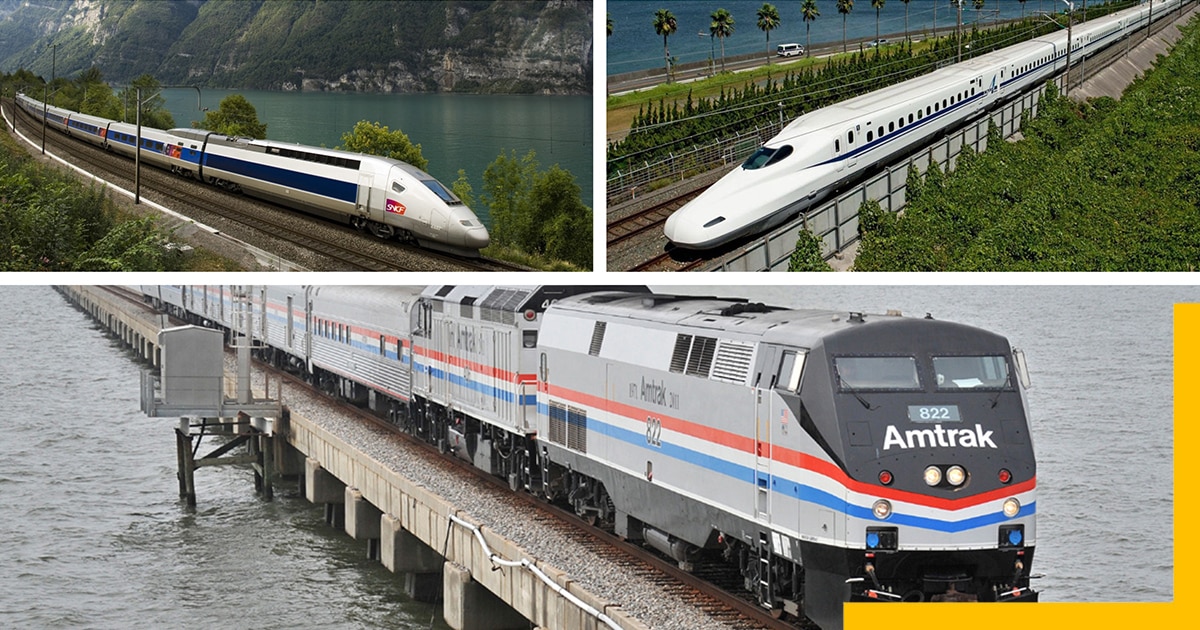
US High-Speed Rail: A Glimpse into the Future
Imagine a time in the near future where you can hop on a fast Amtrak train from the bustling city of St. Louis, whisking through the countryside at speeds that make the journey to Chicago feel like a breeze. The US high-speed rail is no longer a mere figment of imagination, but a budding reality. With projects in the pipeline, the US is gearing up to redefine the meaning of fast on tracks.
Although the Amtrak average speed currently doesn’t quite match up with the rapidity of the rails in countries like Japan or France, the tides are changing. The train from St. Louis to Chicago could soon be a part of a swifter, smoother, and more efficient rail system that stands tall in the global arena.
International Comparisons: U.S. vs. The World
As we ride the Amtrak from state to state, it’s hard not to wonder how fast do Amtrak trains go compared to their international counterparts. Our journey takes a whimsical turn as we race alongside the Shinkansen in Japan or the TGV in France, feeling the adrenaline rush of high-speed rivalry.
In places like China and Japan, trains zip through vast landscapes at speeds that make the Amtrak’s average speed look like a leisurely stroll. The US high-speed rail has some catching up to do, and the race is as thrilling as it is revealing. It’s not just about how fast does an Amtrak train travel; it’s about how fast can it travel, and what stands in the way of the US joining the high-speed rail club.
The how fast does Acela go question isn’t just a matter of speed, but a glimpse into a future where Amtrak trains sprint alongside the fastest in the world. It’s a narrative of ambition, of a nation’s dream to redefine speed and efficiency on tracks.
Our Amtrak journey today is not just a ride, but a reflection of a nation’s aspirations, the technological prowess it aims to achieve, and a step closer to reducing the chasm in train speeds when pitted against the global giants. The whimsical journey on the Amtrak doesn’t just end as we pull into the station; it’s the beginning of a quest, a quest for speed, efficiency, and a spot on the high-speed rail podium.
The Path to Faster Trains
Chugging along the tracks of progress, the United States is steadily inching towards embracing the high-speed train revolution that has already swept through parts of Europe and Asia. As the wheels of innovation turn, there’s a palpable excitement in the air (or shall we say on the tracks?) about the potential evolution of Amtrak’s speed.
The Development of High-Speed Rail in the U.S.
The narrative of high-speed rail in the US is a thrilling tale of aspirations, dotted with both technical marvels and hurdles. It’s not just about the fast Amtrak train or how fast does Acela go, it’s about the broader vision of US high-speed rail The narrative of high-speed rail in the US is a thrilling tale of aspirations, dotted with both technical marvels and hurdles.
It’s not just about the fast Amtrak train or how fast does Acela go, it’s about the broader vision of US high-speed rail. A journey through the recent developments in high-speed rail infrastructure unveils the promise of swift, seamless journeys. It’s about shrinking travel times while expanding opportunities for connections – both human and economic.
The whisper of train from St Louis to Chicago rushing through the tracks at 110 mph is a sweet melody to the ears of travelers and a testament to the steps towards faster rail travel. The $8 billion infusion through the American Recovery and Reinvestment Act of 2009, earmarked for high-speed rail projects, is a hefty financial steam engine propelling the US closer to international counterparts in rail speed technology.
Now, let’s venture into the heart of Amtrak’s average speed evolution. Amtrak’s Acela Express, a shining star in the US rail network, is no slouch with a top speed of 150 mph. Yet, when the Acela Express is put side by side with international speedsters like France’s TGV or Japan’s Shinkansen, it’s akin to a cheetah racing against bullet trains. The realization dawns; there’s room to throttle up!
The Potential Impact on Amtrak’s Speed
The infrastructure bill is like a golden ticket for Amtrak, with billions allocated to jazz up the Northeast Corridor’s Acela trains, pushing the speedometer up to a sprightly 160 mph between Boston, New York, and Washington DC. Yet, it’s not all smooth sailing or should we say smooth railing? The new routes, while a welcome expansion, come with a side of speed bumps. They are significantly slower than a car ride between the cities, sometimes lagging by 40% at certain times of the day.
The technical, financial, and policy challenges are like the three-headed rail ogres standing between Amtrak and the enchanted land of high-speed rail. Track conditions, signaling systems, freight interference, and regulatory barriers form a complex maze. Yet, with a map of international best practices, a compass of innovation, and a hefty dose of investment, the US is on track to navigating through to faster rail days.
Every clink and clank on the tracks is a narrative of progress, each mile an inch closer to a future where the question “how fast does an Amtrak train travel” will have a zestier answer. And as the US steams ahead on the path of rail speed evolution, the promise of a swift, efficient, and connected future rides along!
Conclusion
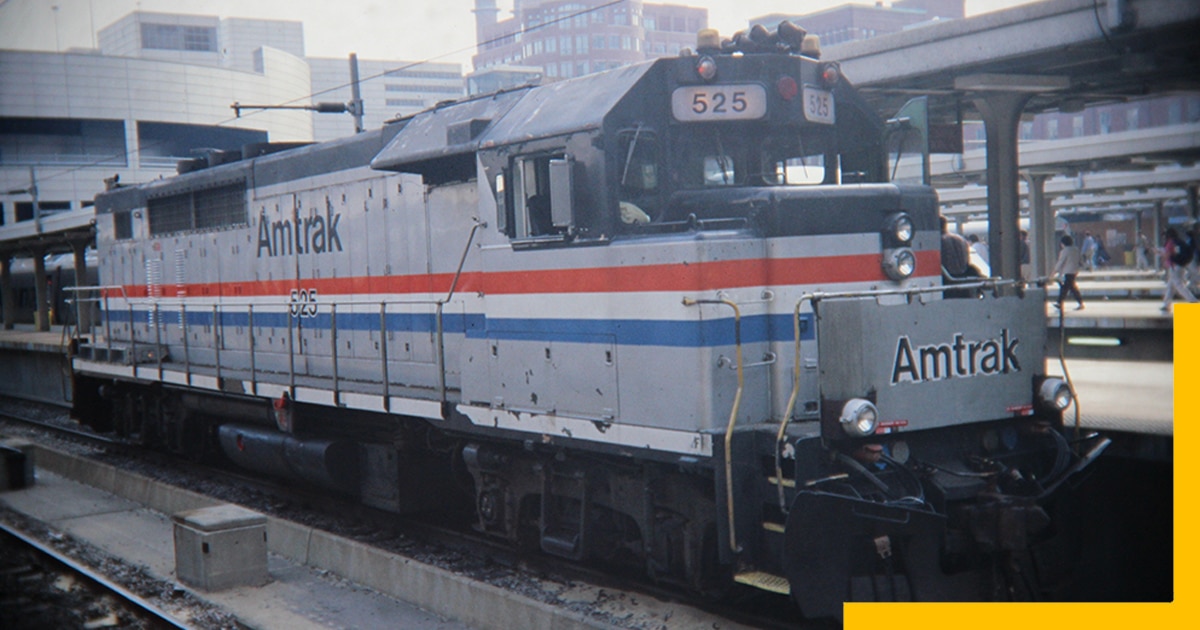
The Future of Amtrak: A Journey Towards Speed and Efficiency
Embarking on this exploration, we were fueled by a simple query: how fast does an Amtrak train travel? Our expedition steamed through the Amtrak average speed, sprinted with the Acela Express, and took scenic pauses on the train from St Louis to Chicago.
We’ve glimpsed the future through the lens of US high speed rail, unearthing potential for fast Amtrak train ventures.
The blend of speed, comfort, and convenience showcased a promising trajectory. As the whispers of a 160 mph Acela sprint in the Northeast Corridor resonate, it’s evident – the voyage towards swifter, more efficient rail journeys is well on track efficiency but of a nation on the cusp of embracing the high-speed rail revolution.
As we disembark from this narrative train, the vistas of a swifter Amtrak continue to beckon, and the tracks laid today echo the rhythm of a speedier tomorrow.

